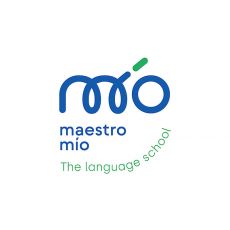Spanish language schools in Malaga, Spain
MaestroMío, Spain
Сourses of in Malaga, Spain
You will not only learn Spanish at MaestroMío, but you will experience it firsthand. Because everyone of students is special in their own way, MaestroMío believe that the best way to teach is to accompany them on their educational path. Because of this, school have a staff whose primary goal is meeting the needs of kids, and MaestroMío treat them with the respect and dignity they deserve. In order to round out your linguistic immersion, MaestroMío will introduce you to cuisine and cultural heritage while help you become more fluent in language.
Linguaschools Malaga, Spain
Сourses of in Malaga, Spain
Linguaschools Malaga has been teaching Spanish to students since 1982. Immerse yourself in the old city at this historic Spanish school, which was one of Malaga's first. The neighborhood is lovely to stroll around because of its many charming little taverns serving tapas, beautiful architecture, and outdoor cafes. Just across the square from the square, in a museum-turned-townhouse, Picasso was born. If you are interested in learning more about Malaga, you have come to the correct spot.
Enforex Malaga, Spain
Сourses of in Malaga, Spain
The Malaga Spanish school is housed in a magnificent, four-story building that has undergone extensive restoration and furnishing. Located on a key street in the city center, the school is in a vibrant and picturesque neighborhood where you can experience authentic Spanish culture and daily life. It is only a 5-minute walk from the beach and right close to the Thyssen Museum.
Spanish courses in Malaga
Malaga is a city and port in the south of Spain, in Andalusia. It is the administrative center of the province of the same name, the sixth largest city in the country. Thanks to its unique combination of history, climate, and modern development, Malaga is considered one of the best places to learn and improve Spanish. The city attracts students from all over the world: the Mediterranean climate, mild winters, and pleasant summer evenings contribute to active outdoor life and street conversations. Here, a vibrant cultural life coexists with technological development — Malaga has long ceased to be just a tourist destination, having transformed into a dynamic European hub. According to the 2016 Eurobarometer of the European Commission, Malaga ranks among the cities with the highest quality of life in Spain. In addition, Andalusia leads in demand for Spanish language courses for foreigners: according to the Association of Spanish Schools for Foreign Students (EEA), it is the most sought-after province, and Malaga is its undisputed center.
Advantages of Malaga for learning Spanish
Quality of life and climate
- Mild climate year-round: average annual temperature around +20 °C, more than 300 sunny days a year. Even in winter it rarely drops below +10 °C, which is ideal for walks and socializing outside the classrooms.
- Active lifestyle: proximity to beaches (Playa de la Malagueta, Playa de Pedregalejo, Playa El Palo) is combined with kilometer-long promenades, parks, and recreation areas.
Safety
- Malaga is known for its low crime rate. This is especially true for central and student areas, where foreign students feel safe even in the evening.
- Thanks to the safe atmosphere, many schools and students hold classes outdoors: on terraces, in parks, which enhances language immersion.
Accredited language centers
- Most language schools in Malaga are accredited by the Cervantes Institute, guaranteeing high teaching quality and the possibility to prepare for official exams (DELE, SIELE, CCSE).
- Schools are located in historic and central areas: in the Old Town (Centro Histórico), the El Perchel district, and La Malagueta. This creates a full immersion effect: after classes, students immediately find themselves surrounded by Spanish — in markets, cafes, and museums.
Multicultural environment
- Malaga is multicultural: tens of thousands of foreign students, tourists, and professionals arrive here every year.
- The historic city center is lively year-round: film festivals, musical concerts (Mediterranean open-air concert series), exhibitions at the Pompidou Center (Centre Pompidou Málaga), the International Theater Festival (Festival de Teatro), and traditional Andalusian celebrations (Semana Santa, Feria de Agosto).
- The local cuisine combines fresh seafood (“espetos” sardine skewers, squid, prawns), tapas, and heartier Andalusian dishes (salmorejo, porra, “pescaíto frito”). It is in such informal settings that foreign students practice their conversational skills.
Wide range of language programs
- Language classes designed for those who want to combine study with leisure: “study & travel,” “study & surf,” and “study & flamenco.”
- In addition to standard courses: general Spanish, intensive programs (10–30 lessons per week), private and semi-private lessons, there are special programs for teachers (methodología ELE training) and for people over 50 (50+ clubs).
- Official exam preparation (DELE, SIELE, CCSE) is implemented at a high level: schools organize mock tests, individual consultations, and modules on grammar, vocabulary, and listening comprehension.
Disadvantages of Malaga for learning Spanish
High prices in summer
- In peak months (June–September), many schools raise prices for courses and accommodation, which can increase the cost of Spanish courses in Malaga. The resort city hosts many local festivals that attract tourists, affecting rental costs.
- Due to Malaga’s popularity among foreigners, intensive groups can be large (up to 15–20 people), which somewhat reduces the effectiveness of individual practice and requires more active self-study.
Summer heat
- July and August can be extremely hot: temperatures often exceed +35 °C and sometimes reach +40 °C. During such periods, studying outdoors is difficult, and students may lose motivation for active communication outside classrooms. However, this refers to midday temperatures, as a refreshing sea breeze in the morning and evening lowers the temperature.
Many tourists
- In summer, central streets (Calle Larios, Plaza de la Constitución, Alcazaba) and beaches are crowded with tourists. This creates noise and queues at popular spots, making it hard to focus on studies.
- Some cafes and bars in the Old Town are adapted specifically for tourists: sometimes you have to look for “local” places to experience authentic Andalusian culture.
Distance to “green” areas
- Despite proximity to the Sierra Nevada mountains, some natural sites (e.g., the El Chorro gorge or ski resorts) require 1–2 hour travel by car or bus. Not all students have access to a private vehicle, so trips outside the city often cost more and require planning.
Language schools in Malaga
Spanish schools in Malaga for foreigners offer intensive group and individual courses (usually 20–30 lessons per week) with native speakers and an emphasis on conversational practice. Classes are held in modern facilities, often including cultural activities (Old Town tours, culinary masterclasses, meetings with locals). Among all Malaga language schools, we highlight the following below.
Spanish language school Enforex Malaga
Enforex Malaga language school is located in the very center of the city, within walking distance of La Malagueta beach and historic quarters. The school offers intensive group and individual lessons (20–30 lessons per week) and DELE exam preparation. Teachers are native speakers with at least three years of experience; classes take place in bright multimedia classrooms.
| School name | 20 lessons/week / 2 weeks | 20 lessons/week / 4 weeks | 20 lessons/week / 8 weeks | 30 lessons/week / 2 weeks | 30 lessons/week / 4 weeks | 30 lessons/week / 8 weeks |
|---|---|---|---|---|---|---|
| Enforex Malaga | 453 | 871 | 1627 | 758 | 1391 | 2587 |
Cost of accommodation in a local family (single room with half board):
2 weeks – 710 euros
4 weeks – 1420 euros
8 weeks – 2840 euros
Spanish language school Linguaschools Malaga
Linguaschools Malaga language school is located in a modern building near La Malagueta beach and the port. It offers intensive group courses (15–25 lessons per week) and individual lessons with native speakers. Classes are held in bright rooms with interactive whiteboards.
| School name | 20 lessons/week / 2 weeks | 20 lessons/week / 4 weeks | 20 lessons/week / 8 weeks | 30 lessons/week / 2 weeks | 30 lessons/week / 4 weeks | 30 lessons/week / 8 weeks | |
|---|---|---|---|---|---|---|---|
| Linguaschools Malaga | 410 | 740 | 1344 | 1344 | 970 | 1860 | 3584 |
Cost of accommodation in a local host family (single room with breakfast and dinner included):
2 weeks – 496 euros
4 weeks – 972 euros
8 weeks – 1864 euros
Spanish language school MaestroMio Malaga
MaestroMio Malaga language school is located in the city center, near the beach and main attractions. The school offers group courses (20–25 lessons per week) and individual lessons with native speakers. Classrooms are equipped with multimedia equipment, and the program includes city tours, conversation clubs, and themed workshops. Teachers have at least three years of experience and focus on live communication.
| School name | 20 lessons/week / 2 weeks | 20 lessons/week / 4 weeks | 20 lessons/week / 8 weeks | 30 lessons/week / 2 weeks | 30 lessons/week / 4 weeks | 30 lessons/week / 8 weeks |
|---|---|---|---|---|---|---|
| MaestroMio Malaga | 570 | 912 | 1552 | 1230 | 2232 | 4217 |
To the course costs you can add accommodation costs. As an example, we have taken accommodation in a local host family with single room, breakfast and dinner included:
2 weeks – 498 euros
4 weeks – 996 euros
8 weeks – 1992 euros
Cost of living in Malaga
According to the Andalusian Association of Language Schools (EEA), the average weekly expenses of a student in the province amount to about 730 €, which includes course fees, accommodation, transport, food, and leisure (museums, cafes, events). In Malaga this figure may be somewhat higher due to the city's popularity, but much depends on the type of accommodation and lifestyle chosen. For example, renting a single room in an apartment without meals starts at about 110 € per week, a double room – from 95 €. Shared accommodation with other students is often chosen for the opportunity to quickly meet an international company, share costs, and practice the language. As for other expenses, a “menu of the day” lunch in a café-bar costs about 10–12 €, a cup of coffee – from 1.20 €. Transport costs approximately 1.30–1.50 € for a single ticket, ten rides on bus or metro – about 9 €, and a taxi ride in the city starts at 3.10 € plus about 1.15 € per kilometer. For entertainment, museum entry (Picasso, Palmetum) usually costs 3–6 €, beach access is free, and bicycle rental starts at 6 € per hour.
Culture, attractions and nature in Malaga
Historic sites
- Alcazaba Fortress (Alcazaba): a 9th-century Moorish citadel, one of the city's symbols. It is located on Gibralfaro hill, offering panoramic views of the harbor and downtown.
- Roman Theatre (Teatro Romano): in front of the Alcazaba are the ruins of an ancient Roman theatre, restored and open to visitors.
- Cathedral of the Incarnation (Catedral de la Encarnación): built between the 16th and 18th centuries, known for its two towers—one was never completed, giving it the nickname “La Manquita” (“The One-Armed Lady”).
- Gibralfaro Castle (Castillo de Gibralfaro): a 14th-century fortress built by Sultan Yusuf I. From here you can see the entire city and coastline, especially impressive at sunset.
Modern art and museums
- Picasso Museum (Museo Picasso Málaga): opened in the Picasso family home, contains over 200 works by the artist, including early pieces.
- Pompidou Center (Centre Pompidou Málaga): a branch of the Paris museum of modern art, with regularly changing exhibitions.
- Authentic art galleries (CAC Málaga, Museo Carmen Thyssen): showcase collections of Spanish and Andalusian painting from the 19th–20th centuries.
Gastronomic features
- “Espetos”: traditional sardine skewers grilled on the beach.
- “Salmorejo” and “porra antequerana”: cold soups based on tomatoes, bread, olive oil, and garlic.
- “Pescaito frito”: fried small fish (anchovies, mullet, silversides), served with lemon and whole-grain bread.
- Wine tours: wineries in the Malaga region (Vidueña, Librería Mora) offer tastings of sweet and fortified wines.
Natural areas and parks
- La Malagueta Park (Parque de la Malagueta): a landscaped green area near the beach with palm trees, fountains, and walking paths.
- La Concepción Botanical Garden (Jardín Botánico Histórico La Concepción): collections of subtropical plants and flowers, over 23 hectares of greenery.
- Sierra de las Nieves: a national park and UNESCO biosphere reserve; about 50 km to the mountain area, but even the nearby hills offer excellent hiking routes.
- Sierra Nevada: a winter resort and ski area, about 100 km away, a trip takes about an hour and a half; ideal for those who want to combine language study with active snow sports.
Festivals and traditions
- Feria de Agosto (Feria de Málaga): the annual week-long August fair, featuring parades, concerts, markets, bullfights, and fireworks.
- Holy Week (Semana Santa): processions of religious brotherhoods through the central streets of the Old Town: an impressive combination of music, cloaks, and traditional drum sounds.
- Carnivals and “Noche en Blanco” (Night of the White Night): nighttime events with free exhibitions, street performances, and theatrical productions.
Safety in Malaga
Crime rate
- Malaga is among the safest cities in Spain. The rate of street thefts and violent crimes is below the national average. Night walks in most central and coastal areas are safe even for lone students.
- Tourist areas are patrolled by local police (Policía Local) and the national gendarmerie (Guardia Civil), further reducing risks.
Precautions
- In crowded places (Atarazanas market, squares near the cathedral, beaches in August) pickpocketing can occur. It is recommended to keep valuables in front pockets or use chest bags.
- Pay attention to narrow streets of the Old Town: in the evening there is little lighting, so it is better not to go far from busy avenues if you are unfamiliar with the route.
Medical assistance
- Several large public and private clinics are located in the city center (Hospital Regional Universitario, Hospital Quirónsalud Málaga). You can call an ambulance at 061 (Andalusian health service).
- Many schools offer insurance packages or help arranging medical insurance for foreign students (for both short-term stays and long-term residence).
Is it worth going?
Malaga is a versatile destination for those who associate language learning not only with the classroom but also with cultural and social immersion. The city’s advantages are obvious, but don’t forget its drawbacks. If your goal is not just to learn basic Spanish but to gain a full cultural and linguistic experience, Malaga is an excellent choice. A combination of mild climate, high quality of life, safety, and a large number of accredited schools creates optimal conditions for immersion.
text bottom



